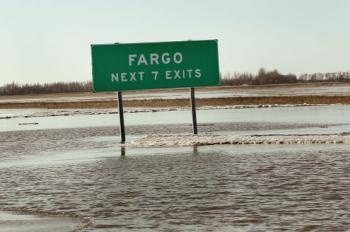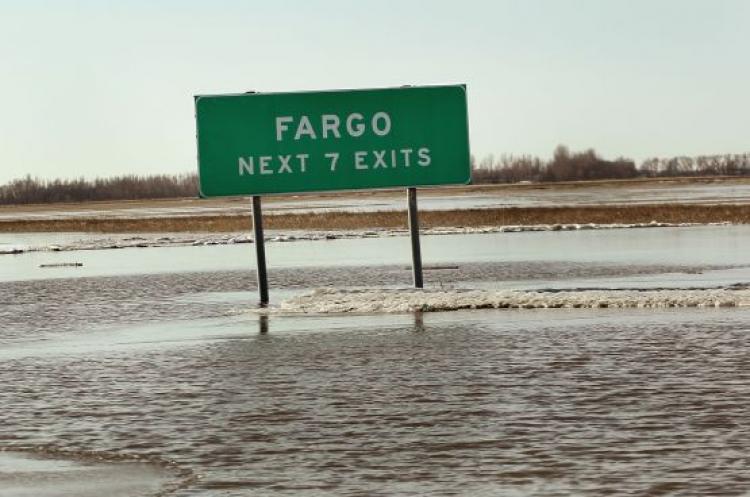The red river in Fargo, North Dakota crested Sunday evening four feet lower than last year’s devastating and record setting flood, according to a New York Times report. The crest was one foot lower than expected and left the city mostly undamaged.
The Red River peaked at 36.99 feet and is expected to decline over the next seven days, according to the National Weather Service. The city said there were no reports of damage to homes or properties as of Sunday morning.
The river’s waters are not expected to reach this high again this season, according to a statement from the Service via a Reuters report. However, snow melt and other factors could increase water levels in some of the river’s tributaries.
Fargo and other areas in North Dakota and Minnesota are prone to flooding. The Red River has flooded 50 of the past 106 years, and every year from 1993 through 2009. Average annual flood damages were estimated at over $65 million.
The U.S. Army Corps of Engineers is working with Fargo and nearby Moorhead officials on a long-term solution to the flooding.
“Our flood fight involves just an incredible amount of temporary measures,” said Bob Zimmerman, an engineer for the city of Moorhead.
Last year, 3.5 million sandbags were used to save more than 700 houses, said April Walker of the city of Fargo’s engineering department.
The Red River peaked at 36.99 feet and is expected to decline over the next seven days, according to the National Weather Service. The city said there were no reports of damage to homes or properties as of Sunday morning.
The river’s waters are not expected to reach this high again this season, according to a statement from the Service via a Reuters report. However, snow melt and other factors could increase water levels in some of the river’s tributaries.
Fargo and other areas in North Dakota and Minnesota are prone to flooding. The Red River has flooded 50 of the past 106 years, and every year from 1993 through 2009. Average annual flood damages were estimated at over $65 million.
The U.S. Army Corps of Engineers is working with Fargo and nearby Moorhead officials on a long-term solution to the flooding.
“Our flood fight involves just an incredible amount of temporary measures,” said Bob Zimmerman, an engineer for the city of Moorhead.
Last year, 3.5 million sandbags were used to save more than 700 houses, said April Walker of the city of Fargo’s engineering department.







